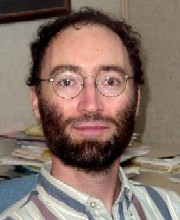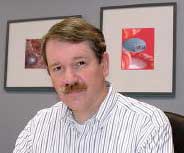Since 1991 IMM has been conducting and catalyzing research on Atomically Precise Manufacturing. This includes development pathways, designs of devices and investigation into technological, economic and ethical implications.
ACCOMPLISHMENTS
- IMM provided testimony for a Senate Hearing for the U.S. Senate Committee on Commerce, Science, and Transportation’s Subcommittee on Science, Technology, and Space, 1992. The submitted written testimony and the oral testimony include discussion of environmental applications.
- IMM co-sponsored the first textbook in the field, Nanosystems, published in 1993.
- IMM for many years co-funded with Foresight Institute the pioneering conference series in the molecular nanotechnology field.
- IMM has briefed NATO, US Senate, National Academy of Sciences, Intelligence Community and US Military Intelligence Agencies (including Vice Chairman of Joint Chiefs) on potential molecular nanotechnology applications, especially those affecting the environment and the military.
- IMM joined with Foresight Institute in February of 1999 to propose Guidelines for the Development of Molecular Nanotechnology
- IMM researchers responded effectively to criticisms of the feasibility of Molecular Nanotechnology in the September 2001 issue of Scientific American.
- IMM researchers, Neil Jacobstein, Ralph Merkle and Robert Freitas presented to the Office of Science and Technology Policy a 2002 white paper, “Balancing the National Nanotechnology Initiative’s R&D Portfolio.”
- IMM co-sponsored the first three (3) textbooks in the emerging field of nanotechnology applied to medicine, Nanomedicine by IMM Research Fellow, Robert Freitas. The first volume of Nanomedicine received a very favorable review in The Lancet medical journal.
- IMM participated in the National Academy of Sciences review on the feasibility of Molecular Nanotechnology (2002-2004) and accepted the Blue Panel Review.
- The National Research Council of the National Academies 2006 report, A Matter of Size: Triennial Review of the National Nanotechnology Initiative determined a nanotechnology Roadmap was needed.
- IMM researchers David Forrest, Rob Freitas and Neil Jacobstein contributed in 2007 to Productive Nanosystems, A Technology Roadmap co-sponsored by Foresight Institute, The Waitt Family Foundation, Battelle, Sun Microsystems and Zyvex Labs.

 Tad Hogg is an IMM Research Fellow, and was a Member of the Research Staff at Hewlett-Packard Laboratories and the Xerox Palo Alto Research Center (PARC). Tad holds a PhD from Stanford and BS from Caltech, both in physics.
Tad Hogg is an IMM Research Fellow, and was a Member of the Research Staff at Hewlett-Packard Laboratories and the Xerox Palo Alto Research Center (PARC). Tad holds a PhD from Stanford and BS from Caltech, both in physics.